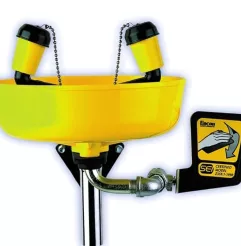Rent
ProLift offers daily, weekly, and monthly rentals. Find the right equipment for maximum productivity and safety.
Let us know how we can assist you! A ProLift specialist will connect with you to help with your material handling needs.

Understanding where to attach a lanyard on a scissor lift is critical for ensuring operator safety. Learn about the proper attachment points and safety guidelines to reduce risks and keep your team protected while working at height.

Most equipment manufacturers, backed by OSHA and ANSI regulations and interpretations, agree that wearing a body harness and lanyard while operating a scissor lift is not required. In some cases, wearing the personal protective equipment (PPE) may add risk.
For instance, narrow-based scissor lifts have tipped over due to the force and momentum of a person falling from the side. When an operator is wearing a body harness and tethered to the lift by a lanyard, they are unable to jump clear of the machine as it falls.
Because some companies have site specific rules that require body harnesses and lanyards for scissor lifts, manufacturers install attachment points to better comply. Doing so ensures the operator is at least tied to a structurally sound point located low on the platform.
Body harnesses and lanyards can create a false sense of security. Education on the differences between fall restraint and fall protection for operators is vital. If misunderstood and misapplied, it can create more risk and harm.
ProLift’s safety team supports you with answers related to scissor lift safety. Contact us with questions or to learn more about available training classes.

ProLift offers a selection of safety training materials for your internal forklift programs. Make your classroom preparation easier with video training kits, daily inspection checklists, lock-out/tag-out kits, operator wallet cards and more.
As a full-service material handling dealer, ProLift can help you with questions and solutions for your equipment, service, parts and more. Tell us how we can help.

Let us know how we can assist you! A ProLift specialist will connect with you to help with your material handling needs.
